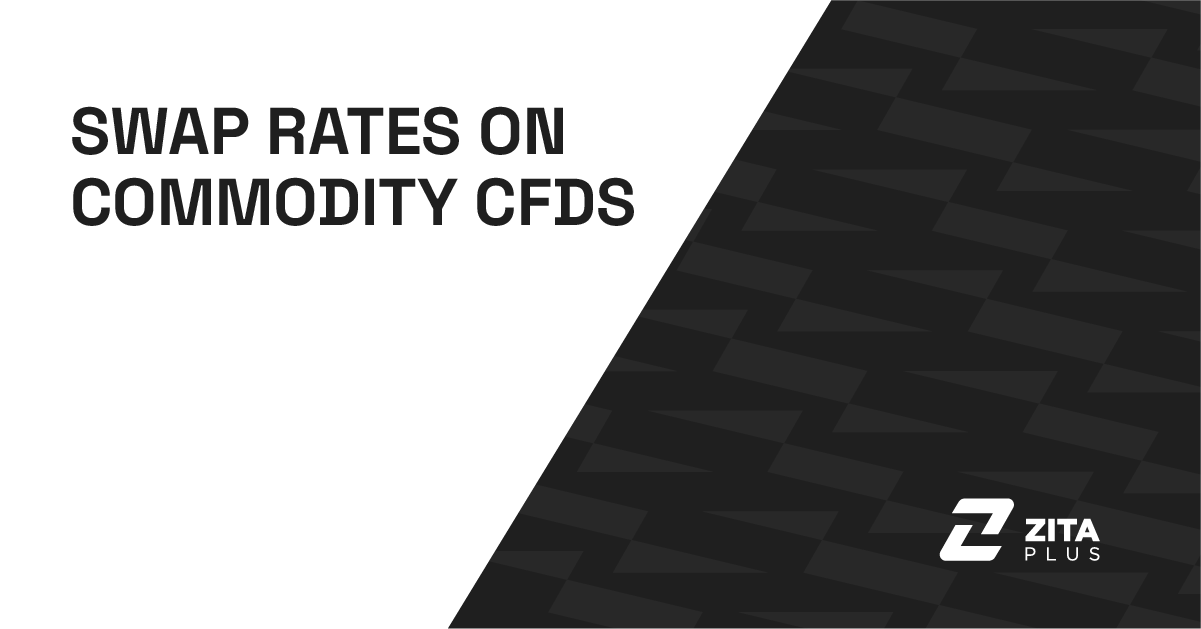
Commodity CFDs are widely traded for their volatility and diversification potential. These instruments, which include gold, oil, natural gas, or silver offer flexible opportunities for speculation. However, one key cost that traders sometimes overlook is the swap rate, which is also known as the overnight financing fee.
Understanding how swap rates work and how they apply to different commodity CFDs is essential for managing your long-term positions, minimizing costs, and building a more informed trading strategy.
A swap rate is the cost or credit applied to a trader’s account when a position is held overnight. It reflects the interest rate differential or financing cost associated with borrowing money to maintain the position. In simple terms, you pay or earn a small fee for each day that your trade remains open past the daily market close.
In commodities CFD trading, swap rates are typically charged in points, and they can vary depending on the direction of your trade (long or short), the instrument being traded, and the broker’s conditions.
Swap rates are calculated using the following elements:
Most brokers apply a triple swap on Wednesday to account for the two days that the market is closed. If you hold a position open past Wednesday’s market close, you’ll be charged or credited three times the daily rate.
Swap rates vary across different types of commodities. These differences are influenced by factors such as volatility, market structure, and the nature of the asset itself. Let’s take a closer look at how swaps typically behave for different commodity groups:
Energy products such as oil and natural gas are among the most actively traded assets in the commodities market. Due to their sensitivity to geopolitical developments, inventory data, and global economic activity, they tend to carry higher swap rates, especially during volatile periods.
These instruments may be structured as spot or futures-based CFDs. Their swap conditions can change depending on the broker’s pricing model, liquidity agreements, or even temporary promotional adjustments. Traders should always check current swap settings before holding oil or gas positions overnight.
Precious metals including gold, silver, platinum, and palladium tend to have varied swap costs based on the currency pair they're quoted in and broader market financing conditions. For example, gold quoted in USD may have different swap characteristics compared to gold quoted in EUR.
In general:
These metals are also sensitive to changes in interest rate expectations, inflation outlooks, central bank policy, and geopolitical tensions, all of which may influence overnight financing costs.
Take a look at our article about gold vs precious metals in terms of risk and return!
Spot commodity CFDs are based on the current market price of the asset and do not have expiry dates like futures contracts. Examples include spot oil or spot gold. These instruments generally incur daily swap charges as long as the position is open, especially if they reflect the cost of rolling over exposure continuously.
However, some brokers also offer commodities based on futures pricing. These may have different swap mechanics or even fixed expiry dates, which can limit overnight fees depending on how the product is structured.
Regardless of format, swap values can be affected by interbank financing rates, asset-specific storage and delivery costs, and underlying market demand. It is important for traders to review swap policies regularly and adjust their position size or holding time accordingly.
Swap charges on commodities are generally higher than on forex due to storage-related and financing costs embedded in the asset. They are especially important for:
If you're holding a long gold position for several days, the swap will accumulate daily. While it might seem small on a per-day basis, it can eat into your profits over time, especially if you're using high leverage or trading large volumes.
To reduce the impact of swap charges, consider the following tips:
At ZitaPlus, all swap rates for commodities are clearly displayed and updated regularly. Traders can view these values directly on the trading platform or via Spreads & Swap Rates through Conditions. ZitaPlus offers:
ZitaPlus also occasionally provides swap-free trading periods or Islamic (swap-free) account options, depending on your account type and region.
Swap rates on commodities CFDs are more than just small daily charges. They are an important part of the cost structure in leveraged trading. Knowing how swaps are used, when they are charged, and how they differ by instrument is important and helpful when trading gold, silver, or oil.
You can trade commodities more effectively by keeping an eye on swap rates, planning your trade duration, and choosing a transparent broker like ZitaPlus.
What is a swap-free account in CFD trading?
A swap-free account, also known as an Islamic account, does not incur overnight interest charges. It’s designed to comply with Islamic finance principles.
Are swap rates the same across all brokers?
No. Swap rates vary based on the broker’s liquidity providers, market conditions, and internal cost structures. It’s important to compare them before trading.
Do swap rates change daily?
Swap rates can be updated by brokers based on market interest rates and volatility. While they often remain stable, they may adjust during high-risk periods.
Why are some swap rates negative and others positive?
A negative swap means a charge, while a positive swap means a credit. This depends on the direction of your trade and the interest rate differential or financing cost.
Can swap charges turn a winning trade into a loss?
Yes. If a position is held long enough, daily swap costs can accumulate and reduce or eliminate profits, especially in high-leverage trading.
Would like to learn how to look financial markets from a different angle? Then keep reading and invest yourself with ZitaPlus.